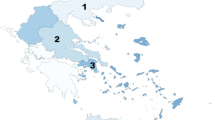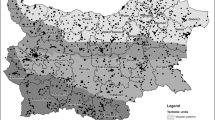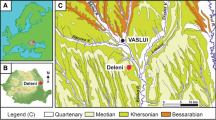Abstract.
For this study 330 instantaneous indoor radon concentrations were selected from the database assembled during the Slovenian National Radon Programme. A relationship was found between indoor radon concentrations, rock type, tectonic faults and age of buildings. Indoor radon concentrations were elevated in buildings that were older than 50 years and in those with a fault under foundations. When these data were eliminated, elevated indoor radon levels were found only in buildings built on limestone. Our conclusions were confirmed by using the machine learning methods: clustering and multiple regression.
Similar content being viewed by others
Author information
Authors and Affiliations
Additional information
Electronic Publication
Rights and permissions
About this article
Cite this article
Popit, A., Vaupotič, J. Indoor radon concentrations in relation to geology in Slovenia. Env Geol 42, 330–337 (2002). https://doi.org/10.1007/s00254-002-0526-y
Received:
Accepted:
Issue Date:
DOI: https://doi.org/10.1007/s00254-002-0526-y




